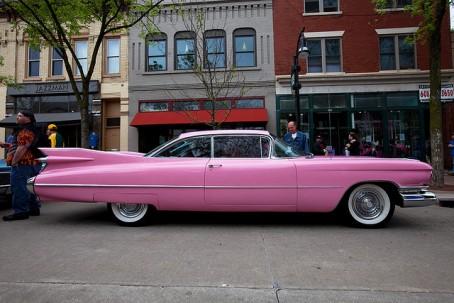
It is that time of the year: breast cancer awareness month: important because as with the increasing incidence of breast cancer, everyone will know someone who has been diagnosed with the disease sometime in their life. Everyone’s lifetime incidence remains 1 in 8. That is a better chance than winning the lottery, getting into an airplane crash or getting hit by a bolt of lightning. Ok, perhaps that is a bit morbid. But the odds are against us women.
The importance is to know the risk factors, know when to be screened and know what environmental exposures increase our risk. The first two topics I covered in my first article on assessing your breast cancer risk. In today’s article, I will cover what environmental exposures put us at risk.
The impact of our environment
In listening to a recent lecture on cancer given by Dr Patrick Garrett, I was sad to learn that in the 1900’s breast cancer was rare. By 1960, it affected 1 in 20 women and by 2000, 1 in 3 women.
What happened in the 1900’s? From Dr. Garrett’s research: in 1908 MSG was discovered. In 1909 chemical fertilizers and vegetable oil were developed. In 1910 margarine, a fake butter and a source of trans fatty acid was made. In 1911 Crisco oil was made. By 1920, synthetic chemical production reached 1 million pounds. In 1921, Betty Crocker and the advent of processed food were born. (As you know most processed foods are high in trans fatty acids) In 1923 lead was added to gasoline. In 1929 Polychlorinated biphenyl, PCB was developed (it is a persistent organic pollutant and banned since 1979) and thiomersal, an organomercury compound was added to vaccines.
In 1936, the US Senate warned the public to take supplements because the soil was deplete of nutrients likely due to over-farming. In 1938, DDT was used to kill mosquitoes. Trucks used to spray whole neighborhoods often times with children trailing behind. DES, a synthetic estrogen also went into use. It is banned, as it is associated with an increased risk in breast cancer. In 1939, fluoride was added to water. In 1940 petroleum product production increased by 350%. These products were in the form of plastics and food items! In 1945 nerve gas was used in pesticides. In 1947, hormones were introduced into livestock and in 1948, the use of MSG doubled in food including baby food. Have a look at some of the condiments in your fridge. I found MSG in a teriyaki sauce in our fridge that I have since thrown out.
Then by 1949, breast cancer incidence begins to double. Is it any surprise?
I was skeptical about the environmental impact on our health when I first started practice. But after 15 years, I am certain it plays a role in adversely affecting our health based on our individual exposures.
The affect of “xenoestrogens”
What are xenoestrogens? They are naturally occurring or synthetic chemicals, which act, like estrogen in our body. We already know that estrogen increases our risk for breast cancer. Why wouldn’t xenoestrogens do the same?
What kind of compounds are xenoestrogens? Bisphenol A in plastics, phthalates in nail polish and colognes, parabens in lotions and deodorants, 4 methlybenzylidene camphor(4 MBC) in sunscreens, lindane prescribed to treat head lice and scabies, atrazine found in weed killer, red food coloring called erythrosine (FD&C # 3) and multiple banned insecticides like DDT.
What accounts for the differences in the way we are affected by exposures?
Why is that one person can smoke all their life and not get lung cancer (rare but it happens)? Or why exposure to a heavy metal may have one person on death’s door but no effect on another?
The answer is SNP’s, pronounced snips, or single-nucleotide polymorphism. It is a variation in our DNA sequences which dictates how susceptible we are to disease and how we respond to treatment and or chemicals. I think the future of medicine will focus on testing for various SNP’s to effectively treat diseases that aren’t preventable.
What is a woman to do to prevent these exposures?
-
Switch to glass or metal containers
-
Buy Safe Sunscreens
-
Buy safe cosmetic and beauty products: free of xenoestrogens
-
Eat whole foods
In future articles, I would like to explore each of these areas more as we as a family transition to a safer environment. We are in this slow process at the moment. We have eliminated most but not all of the plastic: relying on the lunch bots for packing school lunches, steel thermos bottles for water and steel containers to keep food warm.
While our ability to detect breast cancer increases and therefore survival: 90% 5-year survival currently, our decision to reduce our risk and exposure to such environmental exposures should also.
What are your thoughts? Do you think the environment impacts our health? Have you made the transition to avoiding exposures?
Survey: Your input appreciated!
Within the next couple months, I will be launching a wellness site under my own name that will allow me to incorporate my current learning of functional medicine into my allopathic practice and thereby share the knowledge with you all! I need a tagline.
I am stuck on two taglines: “Stylishly Healthy” and or Functional Wellness/ Functionally Healthy.
The first one came about when a dear friend commented on how everything I do is with style. A very high complement I must say! This resonated with me as I do have my own style, as does everyone not to mention that I love fashion. The second tagline goes along more with the new field.
Please vote on your favorite tagline in the comments below and thanks in advance.
Photo credit IBM4381
